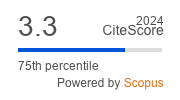Article | Open Access
Designing a Model for Facilitating the Inclusion of Higher Education International Students with Disabilities in South Africa
| Views: | 3655 | | | Downloads: | 2214 |
Abstract: Higher education in South Africa is regulated by several policies, and the obligation of increased access and participation of persons with disabilities into higher education is recognized in legislation (Department of Education, 1997; Department of Higher Education and Training, 2013). However, research indicates that the proportion of students with disabilities in higher education and in study programmes abroad is still very low worldwide (Fazekas, 2017; Organisation for Economic Co-operation and Development, 2011). Study opportunities for these students in higher education institutions abroad, including South Africa, should therefore be increased to provide equal access and experience in an inclusive higher education environment. This study explores possible reasons for the low engagement of South African students with disabilities in international mobility programmes and the function of key role-players in supporting international students with disabilities studying in South Africa (incoming students) and South African students with disabilities studying abroad (outgoing students). This study also explores the ways by which the exchange process could be facilitated more effectively within the context of an inclusive higher education environment. Data on the support services offered to these students was obtained by means of questionnaires sent to the International Relations Offices and Disability Rights Units at higher education institutions in South Africa. The study culminated in the design of a model which specifies the roles of the various role-players in supporting international students with disabilities during their pre-departure, study and return phases.
Keywords: disability; higher education; international mobility programme; South Africa; student
Supplementary Files:
Published:
© Nina du Toit. This is an open access article distributed under the terms of the Creative Commons Attribution 4.0 license (http://creativecommons.org/licenses/by/4.0), which permits any use, distribution, and reproduction of the work without further permission provided the original author(s) and source are credited.


